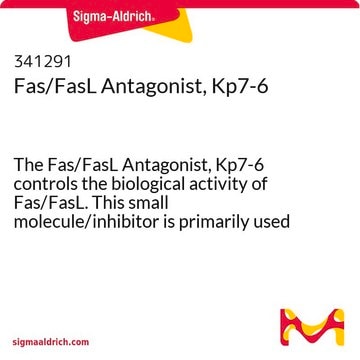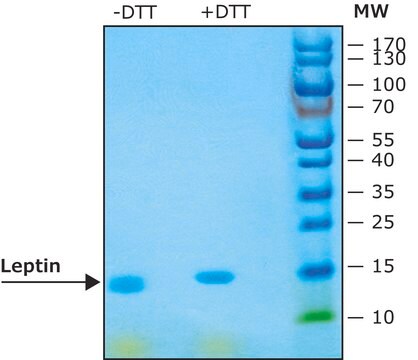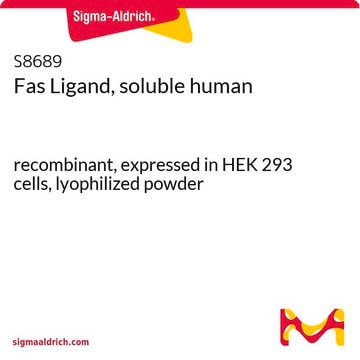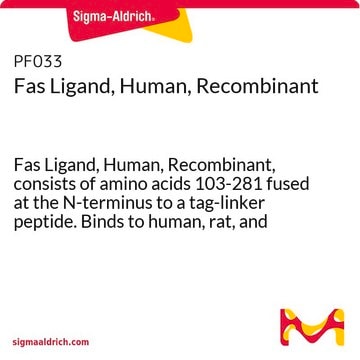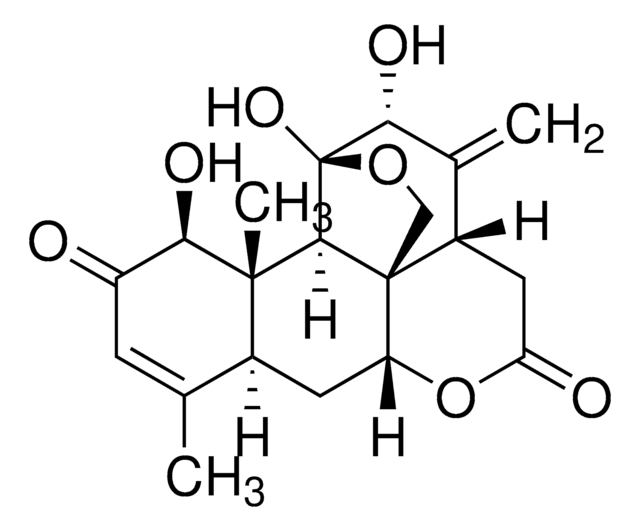F0552
Fas Ligand from mouse
>95% (SDS-PAGE), recombinant, expressed in mouse NSO cells, lyophilized powder
About This Item
Empfohlene Produkte
Rekombinant
expressed in mouse NSO cells
Qualitätsniveau
Assay
>95% (SDS-PAGE)
Form
lyophilized powder
Mol-Gew.
monomer calculated mol wt ~18 kDa
28-32 kDa by SDS-PAGE
Verunreinigungen
endotoxin, tested
UniProt-Hinterlegungsnummer
Lagertemp.
−20°C
Angaben zum Gen
mouse ... Fasl(14103)
Allgemeine Beschreibung
Anwendung
- the induction of apoptosis in PC12 cells and
- the induction of migration in BV-2 murine microglial cells.
Biochem./physiol. Wirkung
Sonstige Hinweise
Physikalische Form
Hinweis zur Analyse
Lagerklassenschlüssel
10 - Combustible liquids
WGK
WGK 3
Flammpunkt (°F)
Not applicable
Flammpunkt (°C)
Not applicable
Analysenzertifikate (COA)
Suchen Sie nach Analysenzertifikate (COA), indem Sie die Lot-/Chargennummer des Produkts eingeben. Lot- und Chargennummern sind auf dem Produktetikett hinter den Wörtern ‘Lot’ oder ‘Batch’ (Lot oder Charge) zu finden.
Besitzen Sie dieses Produkt bereits?
In der Dokumentenbibliothek finden Sie die Dokumentation zu den Produkten, die Sie kürzlich erworben haben.
Unser Team von Wissenschaftlern verfügt über Erfahrung in allen Forschungsbereichen einschließlich Life Science, Materialwissenschaften, chemischer Synthese, Chromatographie, Analytik und vielen mehr..
Setzen Sie sich mit dem technischen Dienst in Verbindung.
